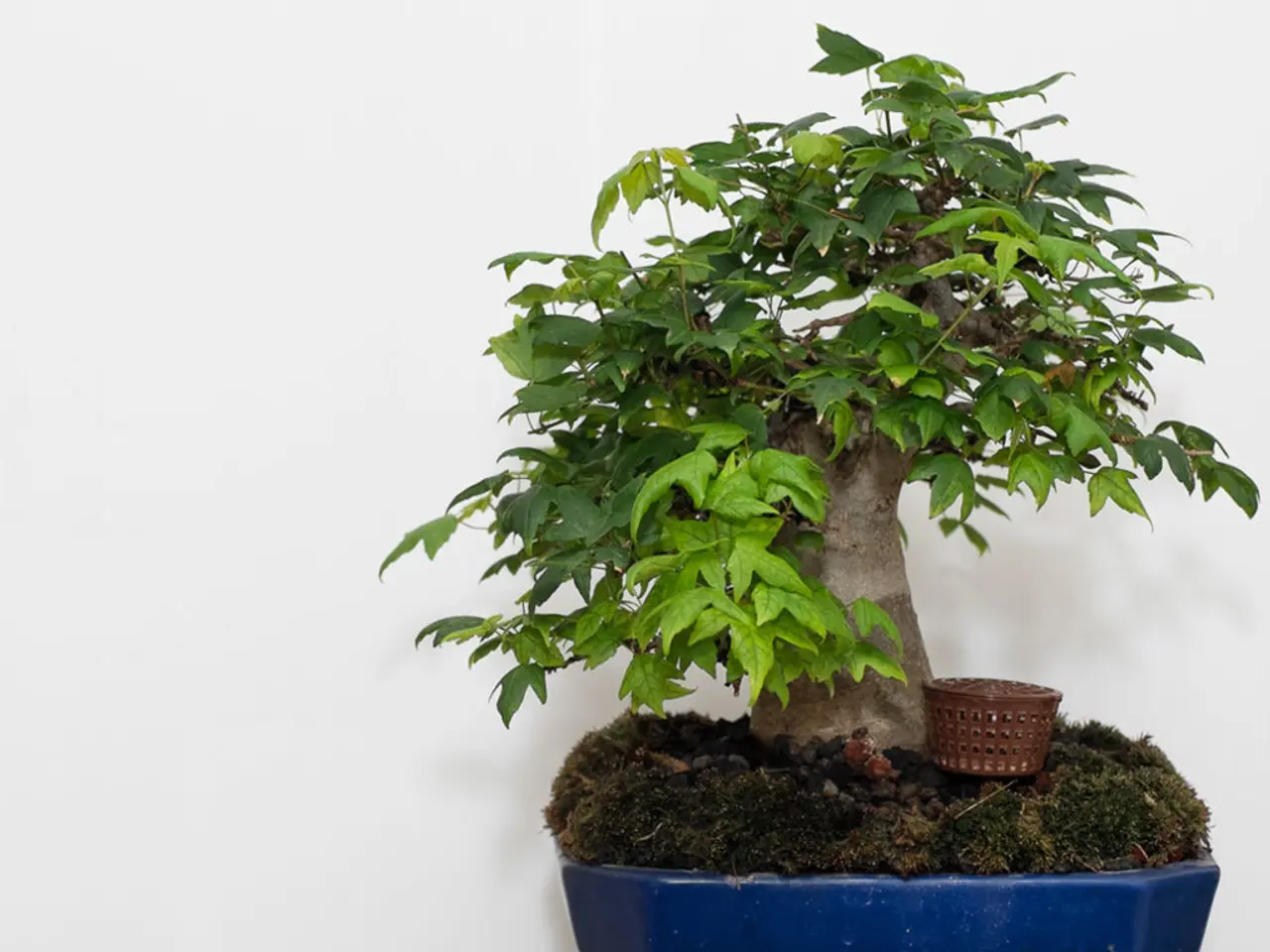Exploring the assortment of Chinese Elm Bonsai designs and examining their unique traits
The Chinese Elm Bonsai, with its remarkable adaptability and resilience, offers a vast array of design possibilities. This versatile species can tolerate low light but thrives in bright, indirect light with moderate temperatures, making it an ideal choice for Bonsai cultivation.
Advanced techniques for Chinese Elm Bonsai design include intricate ramification, careful wiring, systematic defoliation, and the artistic incorporation of Jin. Each of these techniques contributes to refined aesthetics and tree health.
Intricate Ramification
The Chinese Elm’s small, serrated leaves and vigorous growth habit support detailed branch refinement. Achieve fine ramification by selectively pruning new shoots during the growing season to encourage dense branching and delicate twig structures. This repeated pruning refines the branch structure closer to the trunk for a mature, aged appearance.
Wiring
Use copper or anodized aluminum wire sized appropriately for each branch. Start wiring from the trunk to primary branches and then smaller branches, applying wires individually to avoid crowding and damage. Regularly monitor wires for tightness and remove them before they bite into the bark, usually within six months depending on growth rate.
Defoliation
Chinese Elms respond well to full defoliation, which is typically done in early summer. Removing all leaves encourages a second flush of smaller leaves and enhances ramification. Partial defoliation can also be used to balance growth and improve light penetration to inner branches.
Jin Incorporation
Creating Jin (deadwood branches) adds naturalistic aged character to the bonsai. For Chinese Elm, carefully select branches that are slowing growth or detract from the design. Use tools like sharp knives or jin pliers to strip bark and shape the deadwood, then treat with lime sulphur to preserve and whiten the wood. Jin can highlight movement or focal points in the design.
While the sources do not provide explicit step-by-step Jin creation or defoliation protocols for Chinese Elm specifically, these methods are well-accepted practices in bonsai artistry adapted to the species' growth habits and aesthetic possibilities.
Caring for a Chinese Elm Bonsai requires ongoing attention and observation to balance tree health and aesthetics. The tree should be watered every 2-3 days in summer and 4-5 days in winter to maintain ideal moisture levels. Pruning and defoliation can be done in autumn to prepare the tree for winter dormancy, and wiring can be done again in late summer to refine branch structures and create more intricate designs.
Defoliation is most effective during early summer, as the tree has developed enough foliage to respond to pruning. With these advanced techniques, a Chinese Elm Bonsai can be re-styled up to five times, evolving into a poignant work of art that showcases the artistry and dedication of its creator.
- For individuals seeking self-improvement and learning, numerous books on education and self-development are available, offering various perspectives and strategies to enhance one's lifestyle.
- Fashion-and-beauty enthusiasts can explore the world of cosmetics, accessories, and clothing, finding trends that reflect their unique personalities while keeping up with the latest industry events.
- Food-and-drink connoisseurs might enjoy experimenting with different international cuisines, cooking recipes, and pairing beverages, creating memorable dining experiences at home.
- Homeowners interested in home-and-garden projects can delve into DIY tutorials for decorative items, landscaping, or even plant care, like the intricate art of creating Chinese Elm Bonsais.
- Pet lovers can find never-ending companionship in their furry, feathered, or scaled friends. By dedicating time and resources to the well-being of their pets, they enrich both their lives and the lives of their pets.
- Travelers passionate about exploration and adventure can embark on exciting journeys to exotic destinations, embracing different cultures, enchanting landscapes, and unique experiences, all contributing to the allure of their travel lifestyle. Similarly, car enthusiasts can immerse themselves in the world of automobiles, enjoying the speed and grace of luxury sports cars or restoring vintage models to perfection. Meanwhile, casino-and-gambling aficionados can indulge in the thrill of strategic games and the excitement of luck, enhancing their entertainment lifestyle.




